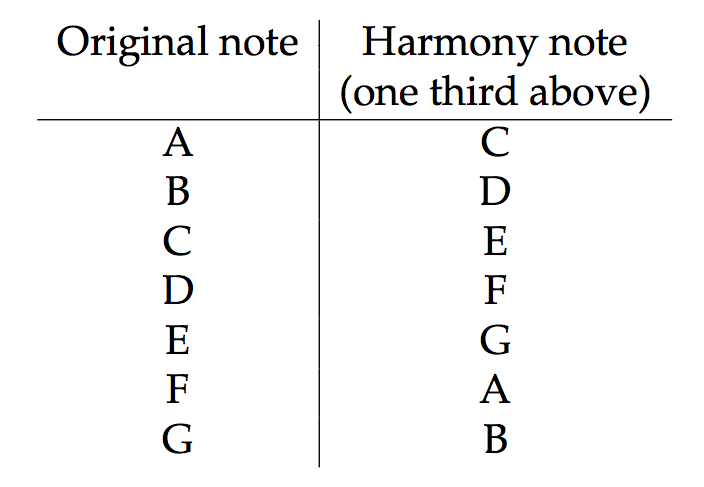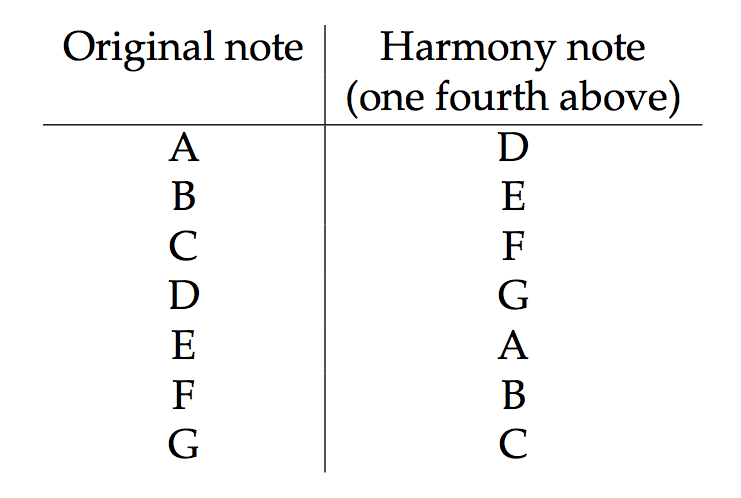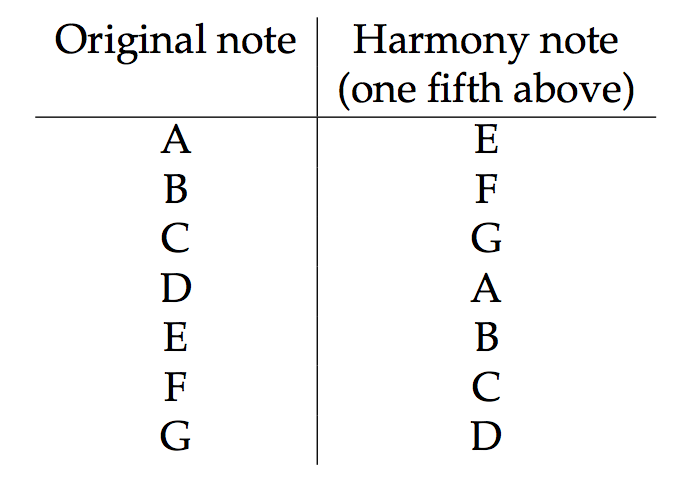Harmonizing Guitar Solos a la Iron Maiden
Today we are going to see how to harmonize guitar solos ideas in a style similar to Iron Maiden. While the first one to apply this idea to the electric guitar was Brian May (Queen), this procedure has been applied by almost any rock or metal band in the last 3 decades. Metallica made it a major component of their signature sound. Famous songs like “More than a feeling” by Boston (listen to the short solo just before the chorus) feature this effect prominently for maximum emotional effect. I do not need to convince you that this is a weapon that you need to have in your arsenal.
An Example
Let’s start with an example, so that you can hear what I’m talking about, and then I’ll explain all the details below. This is a simple soloing idea (you can listen to an mp3 of this example by clicking HERE):

And this is the same example but with an harmonized solo. It is meant to be played by two guitars: the first guitar plays the “lower numbers” in the tab, while the second guitar plays the “upper numbers”. To hear an mp3 of the harmonized example, click HERE.

Quite a difference, isn’t it? The second clip sounds way thicker and much more interesting. The two guitars may be played by two different player in a live situation, or (as in this case) you can play them both by yourself by recording two different tracks.
So let’s see how I achieved this effect, and how you can do the same with your own solos.
Explanation – Harmonizing in Thirds
Let’s have another look at the example above. The first tab has only one melody line, played by just one guitar. The second tab on the other hand has 2 melody lines, played by two different guitars. One of these melody line (the lower one) is identical to the one in the first tab. We will call this “the original solo”. The other melody line (the higher one) is called “the harmony line” or “the guitar solo harmony”. How do we write it?
We begin by having a look at the notes in the key we are playing in. In this example we are playing in the key of Am, so the notes are A B C D E F G (the minor scale will be the topic of a future lesson, for the time being you just need to know the notes in the scale).
Now, we take the original solo note by note, and we write the harmony line by taking the notes one third above the original solo’s notes. “One third” is the distance between one note and the note two degrees higher in the scale. If the last sentence sounds obscure to you, just check the following table:

As you see, every note in the “Harmony” column is 2 scale degrees above the note in the “Original” column.
Let’s look again at the musical example we made above. The original solo starts on the note A, and the harmony starts on C – exactly like in the table. Then in the original solo we play a C note, while in the harmony we have an E note, again like in the table. You can go through all the solo and verify that this is true for all the notes in the solo and harmony part.
In brief, that’s what you need to do if you want to harmonize a solo in thirds:
- Look at the scale that you are using
- Write the harmony part by taking notes that are two degrees above the original solo.
Other Types of Harmony: Fourths and Fifths
This does not exhaust all the possibilities, though. There are other two important cases to consider: harmonizing in fourths and in fifths. These two cases are covered by the tables below:


These tables are used precisely as the one above. Let’s see our original example harmonized in fifths rather than in thirds (to hear this example, click HERE):

The more attentive among you will have notice that I cheated: in the second bar I used an F# rather than a natural F. This is because the interval between B and F is a diminished fifth rather than a perfect fifth, it does not sound very good. Using an F# makes the whole solo sounds better. You will learn to make these judgement calls with experience.
In general, when you are harmonizing a solo you then can choose if you want to use thirds, fourths, or fifths. My suggestion is that you try all three of them and use your ears to decide which one sounds best in your particular situation.
Today we have seen how to harmonize guitar solos in thirds, fourths, and fifths. Start experimenting with this technique with your own guitar solos. Right now we just used a simple minor scale to play the solo, but of course this very same technique will work equally well with any other scales on guitar that you may already know.